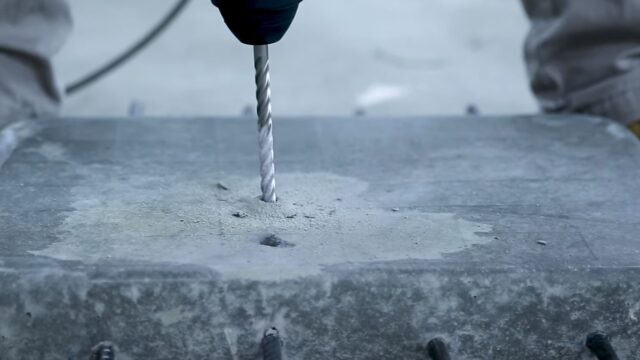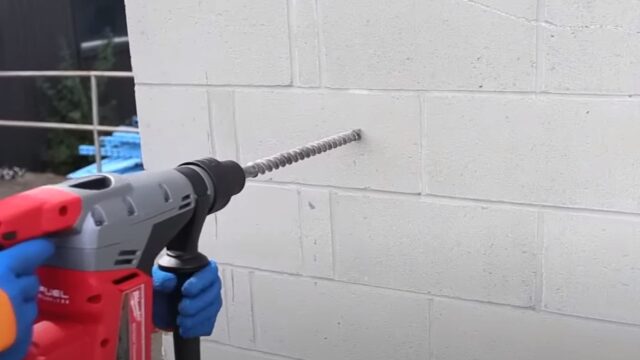Core Drilling Versus Regular Drilling: An Overview
When renovating or planning any structural addition to your Auckland property, understanding the difference between core drilling and regular drilling is vital. Both methods cater to specific construction needs, with each offering its unique advantages and challenges.
The Science of Drilling
- Core Drilling: This technique revolves around removing a cylinder of material, like concrete, from the desired site. A drill with a hollow core bit is employed, allowing professionals to extract samples, make room for utility installations, or create openings for various infrastructure needs.
- Regular Drilling: Utilising a solid drill bit, regular drilling cuts through materials, creating a full hole without leaving any core sample behind. It’s more common for general purposes like hanging fixtures or attaching structures.
Latest Techniques in Core Drilling
- Wet Drilling: Often used when drilling concrete, this method minimises dust and cools the drill bit. The water reduces friction, prolonging the life of the drill bit, and ensures a smoother hole finish.
- Stitch Drilling: When needing larger openings than your core drill bit can handle, stitch drilling becomes handy. It involves drilling overlapping holes to achieve the desired size and shape.
Auckland Council Regulations
For Aucklanders, it’s crucial to be aware of local council bylaws when delving into home renovations. Certain suburbs, including Mt Eden and Ponsonby, have specific regulations impacting the options available for concrete drilling. Failing to comply can lead to penalties or redoing the work at your expense.
Auckland Council Bylaw Requirements
- Noise Control: Due to the noise produced by drilling, some bylaws restrict the hours during which heavy construction operations can be carried out. This is especially pertinent in densely populated areas.
- Structural Integrity: Before drilling, especially core drilling, an assessment might be required to ensure the structural integrity of the building isn’t compromised. This is essential for safety and to uphold the region’s construction standards.
Table: Analysis of Core Drilling Scenarios
| Task | Type of Concrete | Positives | Negatives | Benefits |
| Utility Installations | Reinforced | Accurate, Clean Edges | Requires Specialised Equipment | Precise holes without structural compromise |
| Structural Analysis | Non-Reinforced | Can Extract Samples | Slower than Regular Drilling | Allows for detailed structural assessments |
| Large Opening Creation | High Strength | Can achieve large diameters | Time-consuming, Multiple Holes | Perfect for installing large utilities or fixtures |
Choosing the Right Drilling for Your Needs
The choice between core and regular drilling will significantly hinge on the task at hand. Core drilling is perfect when precision, structural assessments, or larger holes are required. Meanwhile, regular drilling serves well for standard jobs and when no core sample is needed.
It’s always recommended to seek professional advice, especially given Auckland’s bylaw nuances, to ensure a smooth renovation journey. Ensure you’re armed with knowledge, and you’ll ensure the safety and quality of your construction projects.
Frequently Asked Questions on Core Drilling and Regular Drilling
What is core drilling?
Core drilling is a technique that involves using a drill with a hollow core bit. This method removes a cylindrical section (or “core”) of the material, which can be beneficial for extracting samples, creating spaces for utilities, or producing openings in various structures.
How is regular drilling different from core drilling?
Regular drilling uses a solid drill bit and cuts through materials to create a hole, without leaving any core sample behind. It’s typically used for general purposes such as fixing fixtures or attaching various structures.
Why would I need core drilling in my Auckland home renovation?
Core drilling offers precision that’s crucial for certain tasks, such as when you need exact holes for utility installations, structural assessments, or when creating specific openings in walls or floors. Given its ability to extract a core, it’s also beneficial for testing material quality.
Are there any Auckland-specific bylaws I should be aware of for drilling?
Yes, Auckland Council has specific bylaws regarding construction tasks, including drilling. Suburbs like Mt Eden and Ponsonby have particular regulations. For instance, noise control bylaws might limit drilling hours, while structural integrity assessments could be required before drilling.
Which drilling method is faster?
Regular drilling tends to be faster than core drilling for the simple reason that it’s not designed to extract a core sample. However, the exact speed can depend on factors like the material being drilled, the drill’s power, and the depth of the hole.
When might I prefer stitch drilling?
Stitch drilling is beneficial when you need larger openings than your core drill bit can provide. By drilling overlapping holes using the core drilling method, you can achieve your desired size and shape, making it especially useful for significant utility installations or architectural features.
How do I know if my construction needs a structural assessment before drilling?
If you’re planning extensive core drilling, especially in load-bearing walls or foundational areas, it’s wise to seek a structural assessment. Such assessments ensure the drilling won’t compromise your building’s safety or integrity. Auckland Council regulations might also necessitate an assessment for certain projects or suburbs.



